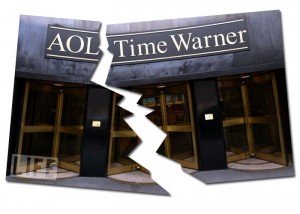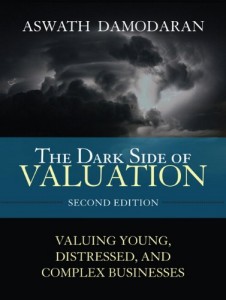Sorry for the silly pun. United Online (UNTD) is a conglomerate of three online companies joined at the parent level. Their first, and oldest, company is a dial-up ISP that was created when Juno and NetZero merged. Their second segment is made of Classmates Online and Mypoints.com, which is an Internet marketing loyalty service. Their latest acquisition is the online segment of FTD, the floral company.
Their FTD operations are rather interesting; floral technology has advanced considerably since the time before there was any floral technology. One visits their website (or sometimes places an order over the phone) and one gets hooked up with members of the FTD network of florists who actually handle the arrangement and delivery. United Online takes a cut of the payments as its fee and sends the rest on to the network members.

The STC Wireless Router: Floral Technology
Their social networking site, classmates.com, charges a membership fee for premium services, and also earns advertising revenue. Their mypoints.com service allows members to earn points by responding to email offers, shopping online at the mypoints.com shopping portal, and using the mypoints toolbar and other activities. Points can be redeemed for gift cards.
Their dialup ISP segment works like an ISP segment, but they also have been purchasing and rebranding DSL in some areas, which they use mainly to bribe people who are cancelling their dialup accounts.
Their dialup revenues have been on the decline, as one would expect, from $320 million in 2007 to $211 million in 2009. The more scalable classmates.com and mypoints division has been slowly increasing sales from $193 million to $236 million over the same period, but has approximately doubled earnings over that period, from $28 million to $59 million. The FTD business was acquired in the middle of 2009, but it produced $545 million in sales in 2009. Earnings for the various sectors were $77 million from FTD, $59 million from classmates.com/mypoints.com, and $70 million from the ISP segment. Then, of course, there are taxes and parent-level expenses, as well as interest from the debt taken on to acquire FTD, bringing total earnings down to $70 million. The company has a respectable P/E ratio of about 10. It also pays a healthy (especially nowadays) 5.3% dividend.
But that isn’t the full story; United Online holds significant intangible assets, which they identify as customer accounts, customer contracts and relationships, trademarks, technology, patents, and domain names, most of which relate to the FTD purchase. The value of these assets was written up by $7.5 million between 2008 and 2009, but the firm recorded $34.8 million in amortization over the same year. Since this amortization is a non-cash expense, it is a source of additional cash flow to the owner, although presumably the asset values listed and the amortization thereof are rationally related to earnings power.
The whole intangible asset picture is a little murky particularly since the diminution in earnings power could be related to the slow economy. The firm claims that FTD sales in 4th quarter 2009 were higher than a year before, and anticipates that this will hold true for future quarters as well. The firm estimates that they will make between 26 and 31 million in capital expenditures in 2010, as against $60 million in total depreciation and amortization in 2009. At any rate, $30 million in additional cash flow drops the company’s P/E ratio from 10 to 7.
 Furthermore, the firm listed as an expense $65 million for technology and development. As Damodaran notes, technology and development (and/or research & development in some firms) generally produces advantages to the company that last longer than the year in which the work is done. However, because these advantages are nebulous in value, accountants require that the full costs be deducted in the year the money is spent. He thinks it would be more appropriate to capitalize these expenses to produce a “research asset” that is carried on the balance sheet and that is amortized in some logical manner that is rationally related to the lifespan of the results of this research, technology, and development. But since no analyst does this, no company releases information that would tell an analyst how to do it.
Furthermore, the firm listed as an expense $65 million for technology and development. As Damodaran notes, technology and development (and/or research & development in some firms) generally produces advantages to the company that last longer than the year in which the work is done. However, because these advantages are nebulous in value, accountants require that the full costs be deducted in the year the money is spent. He thinks it would be more appropriate to capitalize these expenses to produce a “research asset” that is carried on the balance sheet and that is amortized in some logical manner that is rationally related to the lifespan of the results of this research, technology, and development. But since no analyst does this, no company releases information that would tell an analyst how to do it.
United Online is better than most, though. The technology & development figure is mixed, with product development and new technology and improvements mingling promiscuously with maintenance expenses and the costs of operating the company’s Indian facility, but they do capitalize costs relating to software and amortize the same over its useful life, generally three years. However, they only capitalize these costs once the software has reached the application development phase for internal use software, or the technologically feasible phase if the software is to be marketed outside the company, which is later than Damodaran would suggest. Curiously, the company reports only the amount of costs capitalized ($10.6 million in 2009) for the internal use software, and only the amortization ($3.7 million in 2009) of the marketable software.
At any rate, United Online produces respectable earnings and more than respectable cash flow, and as such should be a candidate for portfolio inclusion.













